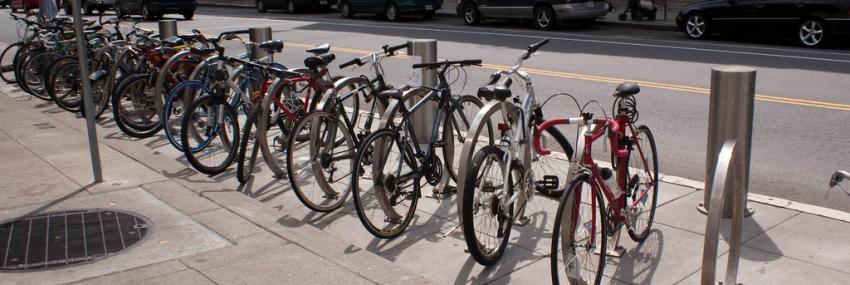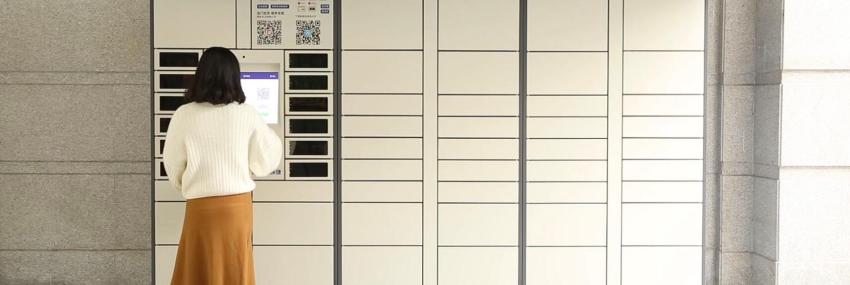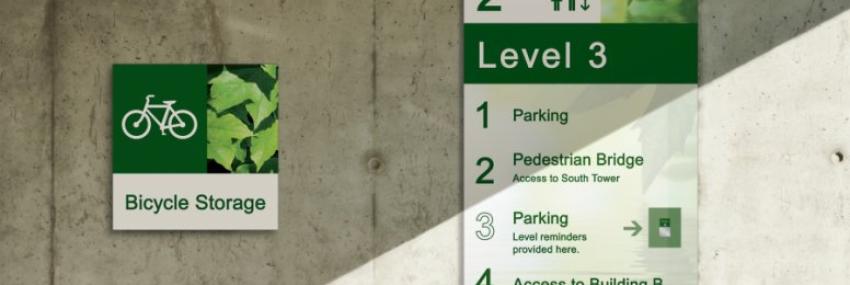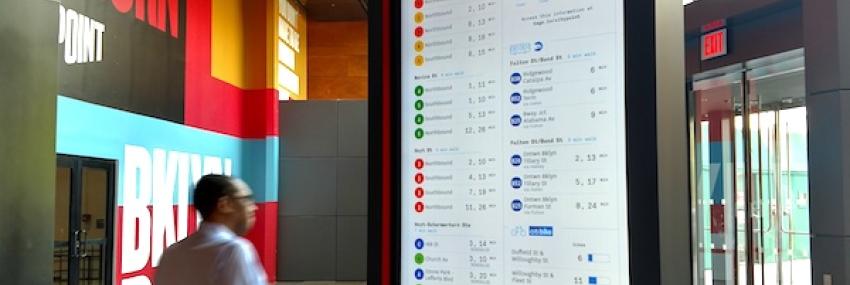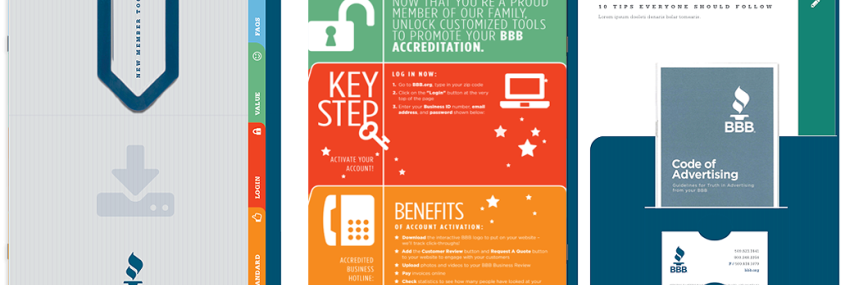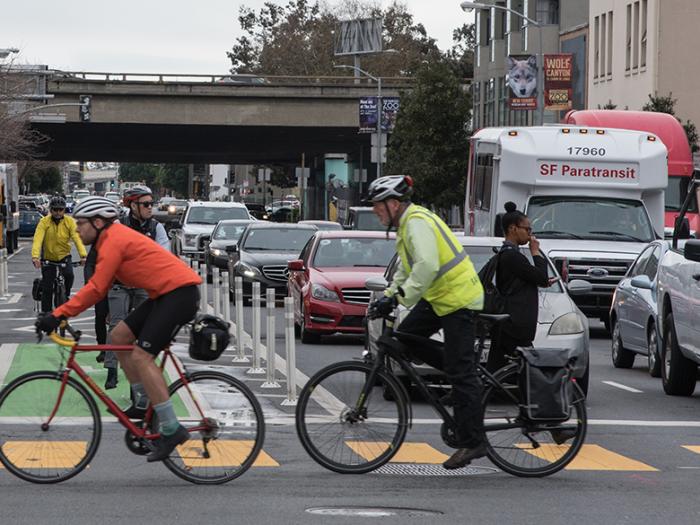
Transportation Demand Management Program
For project sponsors submitting their TDM Plan applications on or after March 11, 2021 are subject to the most recent version of the Program Standards (Version 3.0). Projects that filed TDM Plan applications prior to March 11, 2021 are subject to the version of the Standards applicable on the date of filing. However, a project may elect to use the most current Standards. For inquiries, contact us at tdm@sfgov.org.
TDM Program Standards and Measures
TDM Program Standards 3.0 | Appendix A: TDM Measures (March 2021)
Older Versions of the TDM Program Standards and Measures can be found here.
The Transportation Demand Management (TDM) Program’s primary purpose is to reduce vehicle miles traveled (VMT) generated by new development projects. The Program is designed to work with developers to provide more on-site amenities that will encourage additional travel options so people can get around more easily without a car. These choices are better for the environment, help reduce the amount of congestion that new projects contribute to, help to reduce risks to pedestrians and cyclists, and improve the overall efficiency of our transportation network.
The intent is to “shift” more typical car dependent travel practices by providing a series of development-focused TDM measures, such as:
- Fewer parking spaces relative to surrounding neighborhoods
- More bicycle parking and amenities
- Subsidized transit passes
- Delivery services facilities
The TDM Program applies to nearly all types of new development and large changes of use. The end result: more sustainable transportation options for a building's tenants, employees, residents, and visitors, which benefits not only the local neighborhood, but the City as a whole.
For details about the Program background, see the Program Technical Justification (January 2018)
Planning Commission and Legislative Actions on TDM Program
On August 4, 2016, the Planning Commission first adopted the TDM Program Standards. Subsequently, on January 19, 2017, the Planning Commission approved substantive and minor amendments to the TDM Program Standards, and on February 17, 2017, the Planning Commission also approved minor amendments that were necessary to align the TDM Program Standards with the final version of the TDM Ordinance passed by the Board of Supervisors. The February 2017 TDM Program Standards is documented here as Version 1.0.
On February 7, 2017, the Board of Supervisors passed Board File 160925, and on February 17, 2017 the Mayor approved Ordinance 34-17, making the TDM Program effective on March 19, 2017.
On June 7, 2018, Program staff reported on the Program's first year of implementation and proposed amendments reflecting feedback gathered during that time. The Planning Commission unanimously approved substantive amendments to ACTIVE-1 and ACTIVE-2 (TDM measures), and the Planning Director approved minor amendments to correct text references and clarify implementation requirements (Resolution No. 20199).
On March 11, 2021, the Planning Commission unanimously approved substantive amendments to the TDM Program Standards to create a Limited TDM Plan option for certain low-density residential projects, clarify requirements for projects constructed in multiple phases, and make amendments to the ACTIVE-2, INFO-1, PKG-1, and PKG-2 measures. The Planning Director also approved minor amendments to clarify and correct text references and implementation requirements (Resolution No. 20871).
For projects filing their TDM Plans on or after March 11, 2021, please be sure to follow the March 11, 2021 Version 3.0 of the Program Standards. Projects with their TDM Plans already filed can elect to use the new set of Standards. For inquiries, email us at tdm@sfgov.org.
HOW TO APPLY FOR A TDM PLAN
Program Documents & FAQs
- Transportation Demand Management (TDM) Program Standards and Appendix A
- Program Technical Justification
- Transportation Demand Management FAQs
Applications
Related Projects
Transportation Impact Analysis Guidelines for Environmental Review - Update
Learn MoreWHEN IS A TDM PLAN NECESSARY?
In general, any Development Project that meets the applicability criteria of Planning Code Section 169.3 shall be subject to the TDM Program requirements, and must submit a TDM Plan.
- New construction resulting in ten (10) or more Dwelling Units, or bedrooms for Group Housing;
- New construction resulting in 10,000 square feet of occupied floor area or more; or
- Any Change of Use resulting in 25,000 square feet of occupied floor area or more.
Projects that are 100% Affordable Housing, or projects that are for Parking Garages or Parking Lots that are not included within a larger Development Project, are exempt from the TDM Program requirements. Projects that will be occupied by a non-profit organization that will receive funding from the City to provide services at the subject property are exempt from all TDM application fees but are required to file a fee waiver with their application submittal.
For more details, please review Planning Code Section 169.
HOW TO MEET THE TDM PROGRAM REQUIREMENTS
- Based on the Development Project characteristics, a point target is calculated. To calculate a project's point target, use the TDM Tool. For guidance, please review the TDM Tool User Guide.
- Each applicable land use category for a project generates its own point target. To meet the point target(s), select from a menu of TDM measure options.
This information is needed when you are ready to create and apply for a TDM Plan.
Overall Process
| Phase | Step | Action (Responsible Party) |
Description |
|---|---|---|---|
| TDM Plan Development | 1 | Determine Applicability (property owner / Planning Staff) |
Property owner determines if the TDM Program is applicable to the Development Project. Planning confirms final applicability. |
| 2 | Fill out Application (property owner) |
If subject to TDM Program, property owner understands TDM requirements and gathers information necessary for TDM Plan Review Application. | |
| 3 | File Application (property owner) |
Property owner submits a TDM Plan Review Application for City review, along with an administrative fee | |
| TDM Plan Review | 4 | TDM Plan Reviewed (Planning Department staff/ property owner) |
Planning Department staff reviews the TDM Plan, based on the land use characteristic of the Development Project and the applicable version of the Program Standards. The Property owner revises the TDM Plan, if necessary. |
| Project Entitlement | 5 | TDM Plan: Approval and Notice of Special Restriction (Planning Department staff/ Planning Commission) |
If the Development Project is approved, the requirement for a TDM Plan is included as a Condition of Approval. The final TDM Plan is recorded to the property through a Notice of Special Restrictions as part of and prior to issuance of the Development Project's building permit application. |
| TDM Plan Monitoring and Reporting | 6 | Pre-Occupancy Site Visit (Planning Department staff/ property owner) |
Prior to issuance of a First Certificate of Occupancy, property owner is required to submit a Pre-Occupancy Monitoring and Reporting Form and Planning Department staff will conduct a site visit with the property owner to verify that all physical measures (bicycle parking, signage, etc.) have been included as planned, and that all necessary documentation for programmatic measures has been received. |
| 7 | Ongoing Monitoring and Reporting (Planning Department staff/ property owner) |
Once the building is occupied, the property owner is required to submit an Ongoing Monitoring and Reporting Form with an administrative fee. Planning Department staff will review the statement to ensure compliance with the TDM Plan. Enforcement steps will be taken, if needed, to attain compliance status. Projects consisting only of 24 Dwelling Units or less are exempt from the Ongoing Monitoring and Reporting Fee, but must still submit the Form as required. Ongoing Monitoring and Reporting is not required for TDM Plans for Land Use Category D nor for projects using only a Limited TDM Plan. | |
| 8 | TDM Plan Update (Planning Department staff/ property owner) |
At any time after the Development Project's entitlement, the property owner may voluntarily initiate review of the TDM Plan, by filing a TDM Plan Update Application, along with an administrative fee. |
Plans
Active TDM Plans by Record Number
Use this map to see all of the TDM Plans in your neighborhood. Each dot represents a TDM Plan that is either currently being reviewed by the Planning Department or has been implemented.
Monitoring & Reports
The TDM Program includes an active monitoring and reporting component to ensure the compliance and effectiveness of the Program. Over the life of a project, the Planning Department will monitor the implementation of its TDM Plan. A project is required to complete an Ongoing Monitoring and Reporting Form on an annual basis, where staff will check for the installation and/or implementation of its TDM measures.
TDM is an evolving field and new technological advances occur regularly. Potential updates to the TDM measure menu may happen, reflecting the evolving field. In addition to potential updates, Planning Department staff will share a report on the implementation of the TDM Program every four years.




